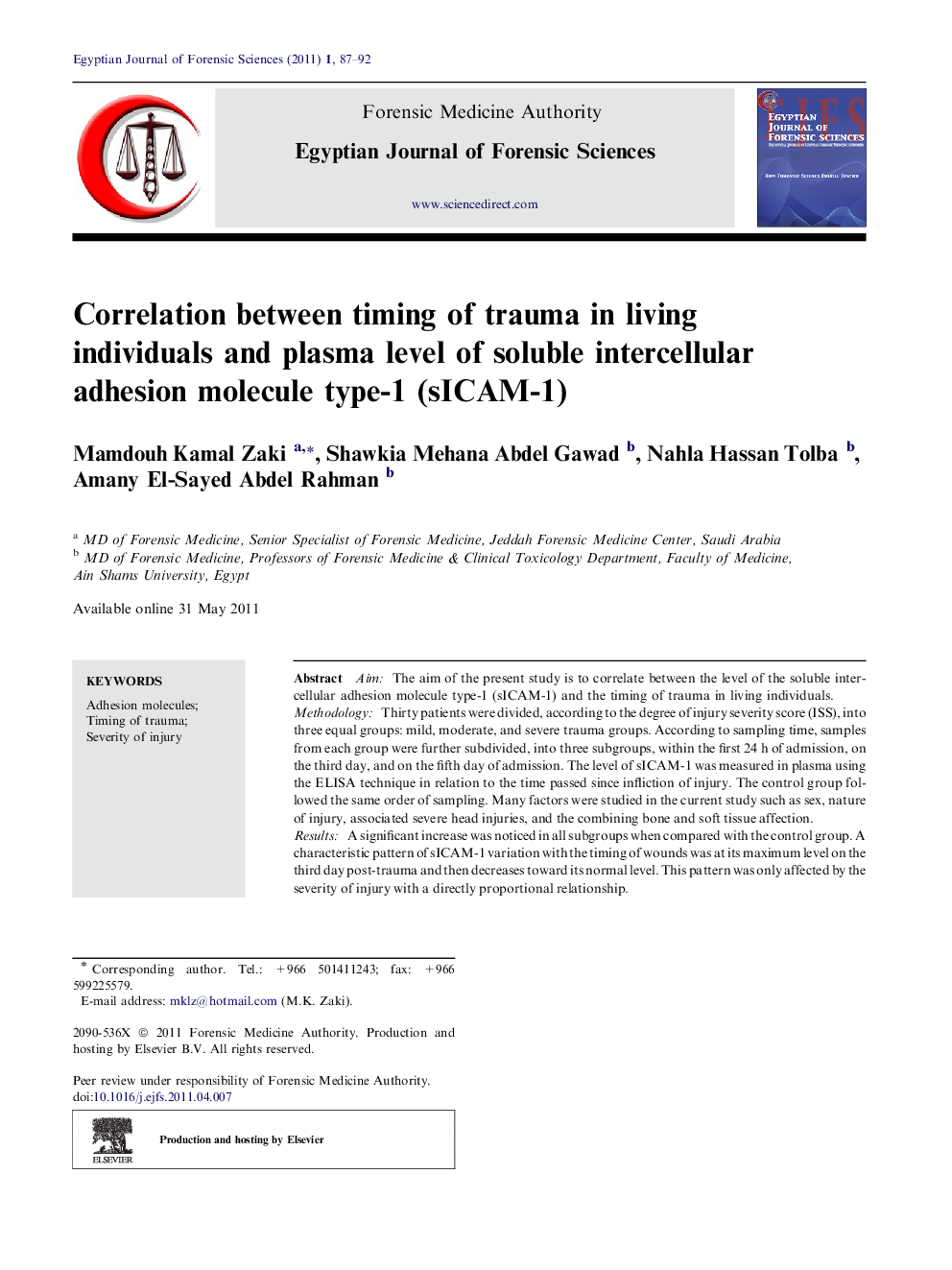| Article ID | Journal | Published Year | Pages | File Type |
|---|---|---|---|---|
| 1097528 | Egyptian Journal of Forensic Sciences | 2011 | 6 Pages |
AimThe aim of the present study is to correlate between the level of the soluble intercellular adhesion molecule type-1 (sICAM-1) and the timing of trauma in living individuals.MethodologyThirty patients were divided, according to the degree of injury severity score (ISS), into three equal groups: mild, moderate, and severe trauma groups. According to sampling time, samples from each group were further subdivided, into three subgroups, within the first 24 h of admission, on the third day, and on the fifth day of admission. The level of sICAM-1 was measured in plasma using the ELISA technique in relation to the time passed since infliction of injury. The control group followed the same order of sampling. Many factors were studied in the current study such as sex, nature of injury, associated severe head injuries, and the combining bone and soft tissue affection.ResultsA significant increase was noticed in all subgroups when compared with the control group. A characteristic pattern of sICAM-1 variation with the timing of wounds was at its maximum level on the third day post-trauma and then decreases toward its normal level. This pattern was only affected by the severity of injury with a directly proportional relationship.RecommendationsWe recommend the forensic use of sICAM-1 in the estimation of the timing of trauma in living individuals, especially in cases of doubtful circumstances of trauma or suspected abuse or torture, which will improve the wound age assessment and enforce the probability testing by experts.
